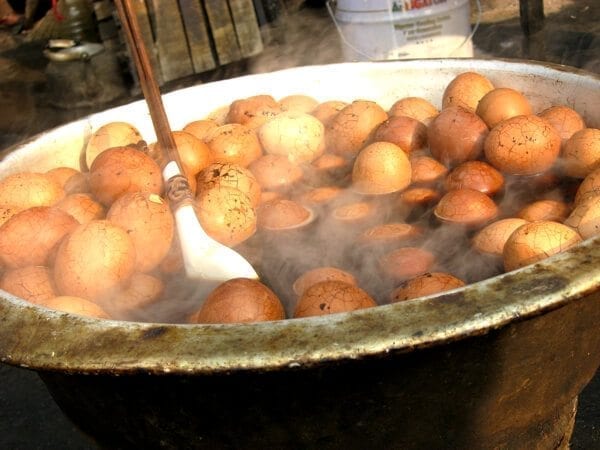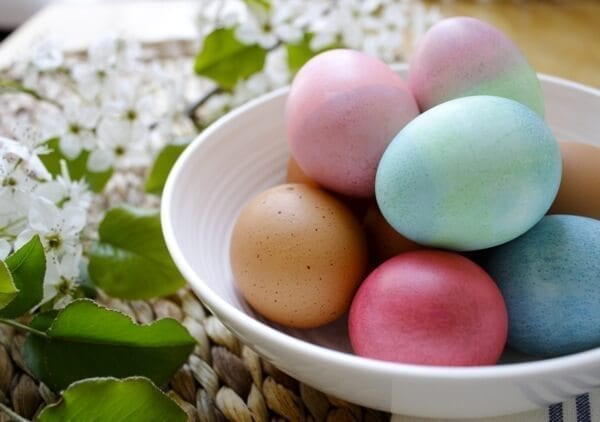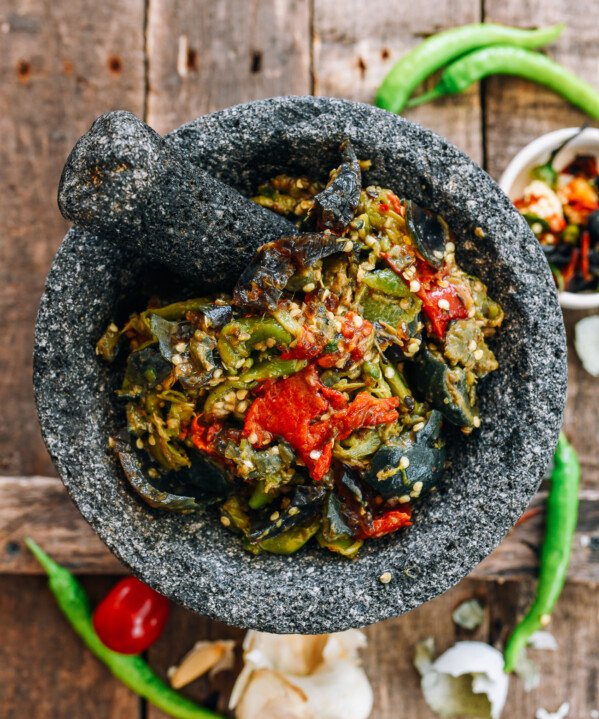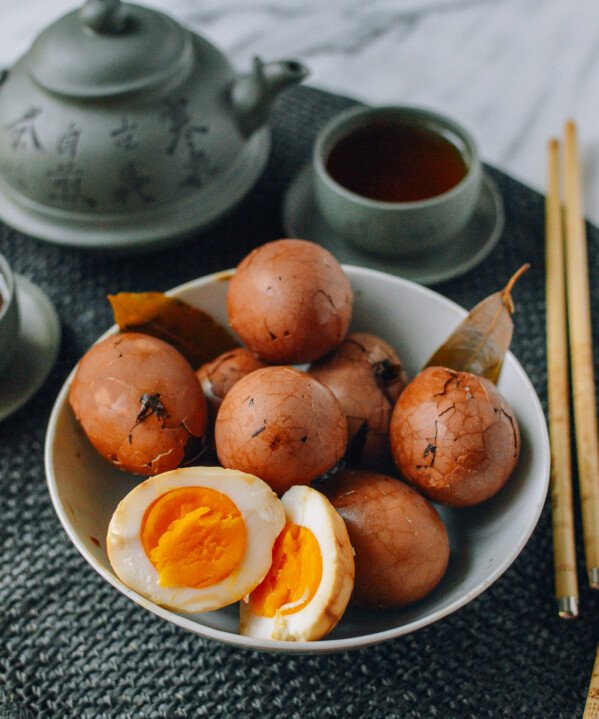Century eggs, also known as preserved eggs, thousand-year-old eggs, or millennium eggs—pídàn in Mandarin and pei dan in Cantonese (皮蛋)—are a Chinese delicacy. Though they’ve earned a certain reputation, we love using them in key dishes.
Learn everything you need to know about these uniquely preserved eggs, from their distinctive flavor to culinary applications. Whether you’re making a congee, spicy cold tofu dish, or traditional appetizer, this comprehensive guide will show you how to incorporate century eggs into your cooking!
What Are Century Eggs?
Century eggs are duck, chicken, or quail eggs preserved in a mixture of clay, ash, salt, quicklime, and rice husks. Despite their intimidating name, they aren’t actually preserved for a century or a thousand years—the process typically takes between a few weeks to a few months.
The egg white transforms into a dark, translucent amber or brown jelly with a firm texture, while the yolk becomes a deep greenish-gray with a soft, creamy center that can sometimes be slightly runny at the core.
Fresh century eggs are wrapped in their preservation mixture and need to be unwrapped and rinsed before using. In modern markets, they’re commonly sold already cleaned and individually wrapped in plastic, ready for consumption. (While you can cook them further, you don’t have to. You can use them as is.)
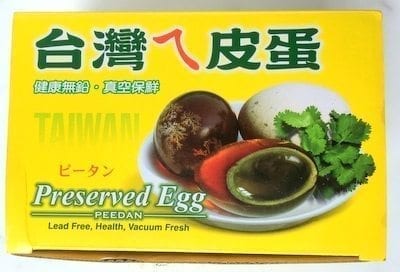
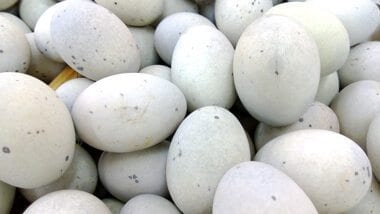
Century eggs have:
- A rich, complex umami flavor with mineral notes. The flavor is eggy and rich, but also more robust than a regular hard boiled egg.
- A gelatinous egg white texture and creamy yolk
- A distinctive aroma reminiscent of ammonia (the result of the alkaline preservation ingredients), but don’t let this put you off!
These eggs get kind of a bad rap. We saw them once in an episode of Fear Factor as a food challenge sometime in the early 2000’s. (Judy watched it and said, “I can do that—just give me some soy sauce!”).
Recently, we watched I’ll Have What Phil’s Having (a PBS show that seems to have led to the Netflix series Somebody Feed Phil), where they weren’t portrayed in the best light either, even by the Chinese American/Canadian folks who were with him! They ate the eggs in a traditional Cantonese style—with pickled ginger. Bill remembers it from his childhood—a banquet cold platter with pickled ginger and wedges of century egg.
We would call that “advanced.” Eat that if you’ve gotten to know the century egg a little better already or you may feel like a contestant on Fear Factor yourself!
These days, we like to use century eggs as ingredients IN things rather than eating them on their own. If you’re a century egg novice and try to scarf an egg without much else, you’re just setting yourself up for failure. We want to set you up for success.
Let’s talk about how to use them!
How to Use Century Eggs
To prepare century eggs, simply remove any packaging, peel off the shell carefully. The preservation process makes the shell somewhat easier to remove than fresh eggs. Rinse them, and chop/slice them for your dish!
The cleanest way to cut through a century egg is with unflavored dental floss or cotton thread.
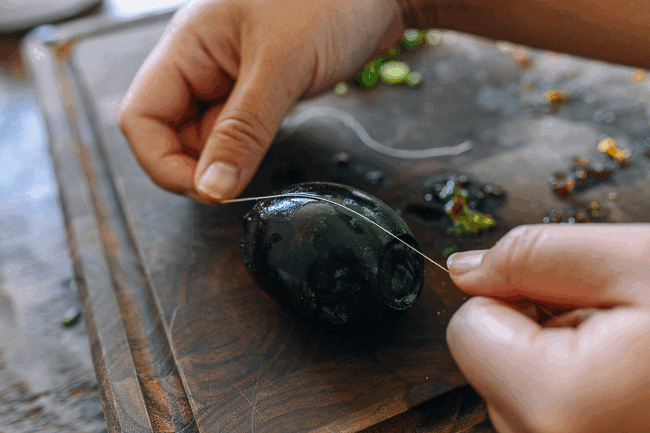
The yolk is very creamy, so using a knife can get messy.
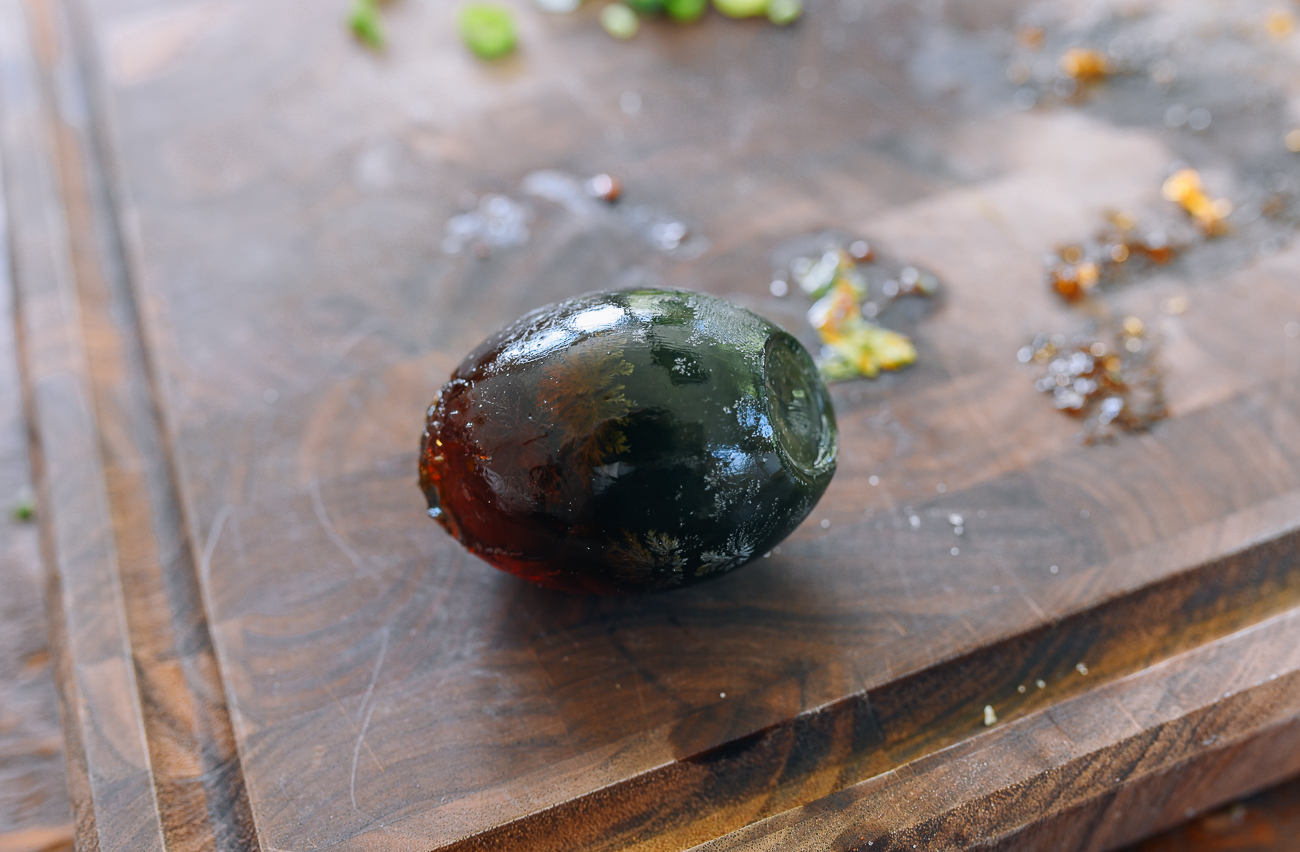
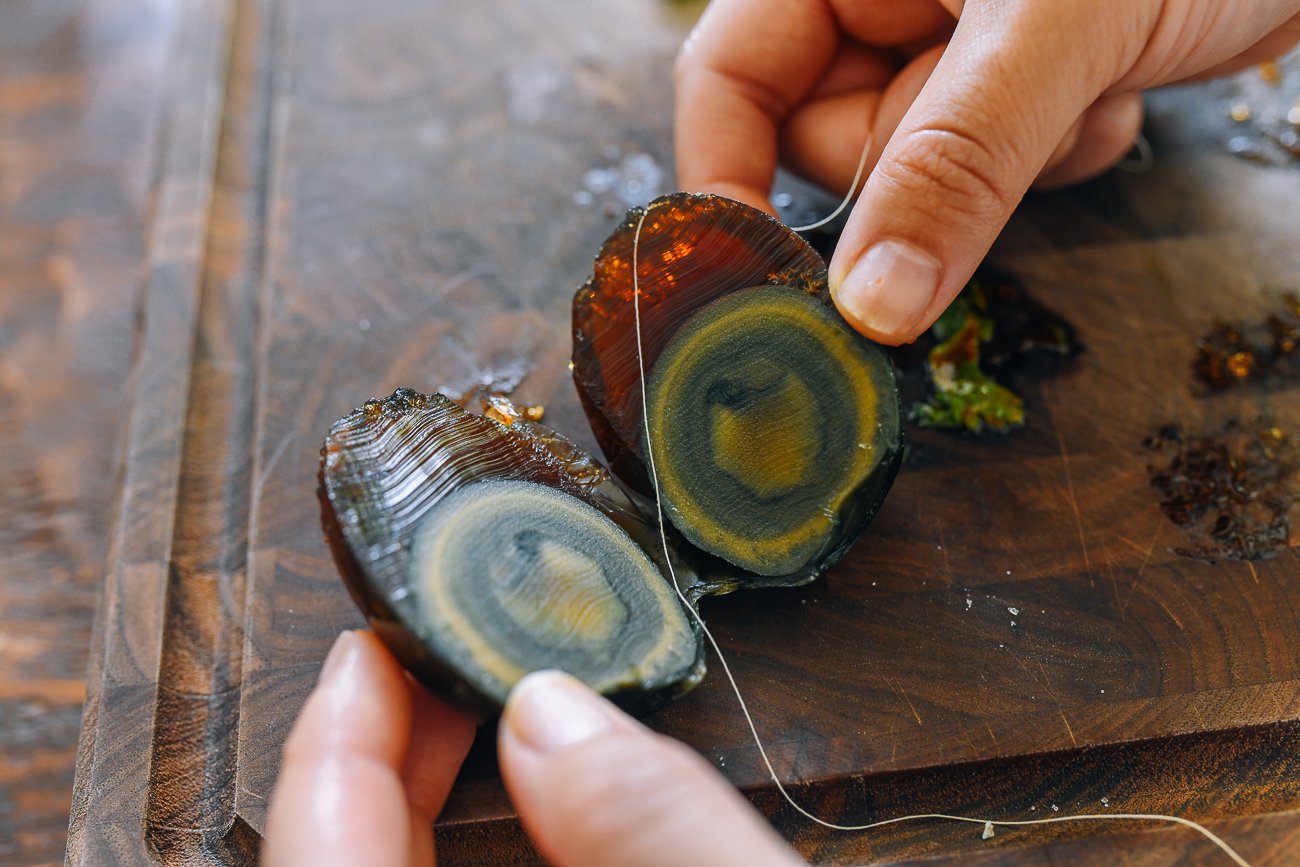
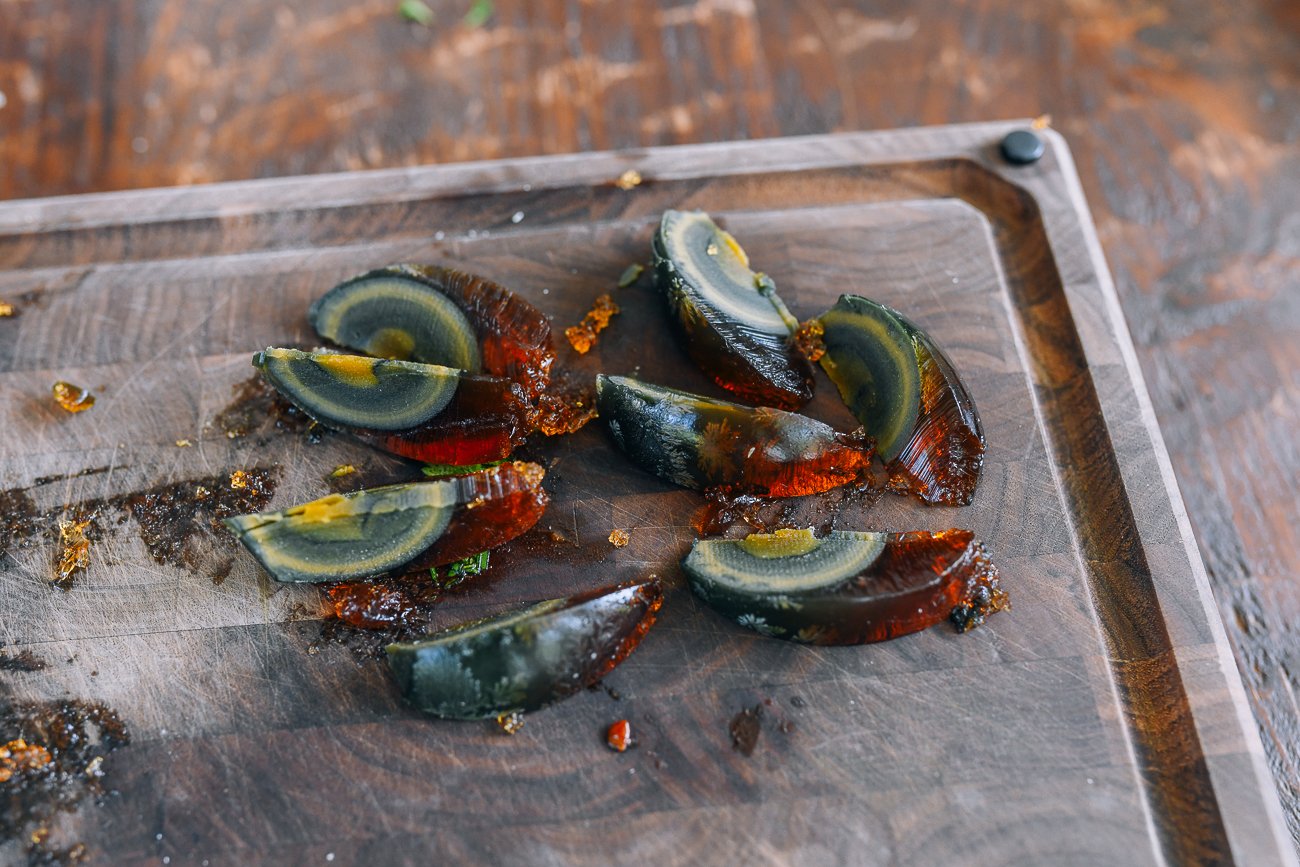
Here are our favorite ways to use century eggs:
- Congee: Perhaps the most classic use for century eggs is in congee, where they add rich flavor and textural variation. If you’re new to century eggs, chop them into small pieces, so you can get little tastes of egg with each bite. Work your way up from there!
- Cold Appetizers: Slice and serve century eggs with silken tofu with a nice spicy dressing for a delicious cold appetizer! The strong flavor of the dressing really goes well with the bland tofu and the rich eggs. Sarah’s Korean college roommate (admittedly no stranger to fermented/preserved food) tried century eggs for the first time in this dish and immediately loved them. (“Hey, can you make that weird egg thing again?”)
- Stir-fries: Chopped century eggs can be incorporated into quick stir-fries with vegetables. We are particularly fond of a Hunan-style century egg stir-fry with fried spicy peppers! We will have to post that recipe at some point! We do have this simpler Smashed Chili with Century Eggs recipe that you can try in the meantime.
- Steamed Dishes: Steam wedges of century egg with ground pork and preserved vegetables for a savory dish, or make our Three Color Steamed Eggs.
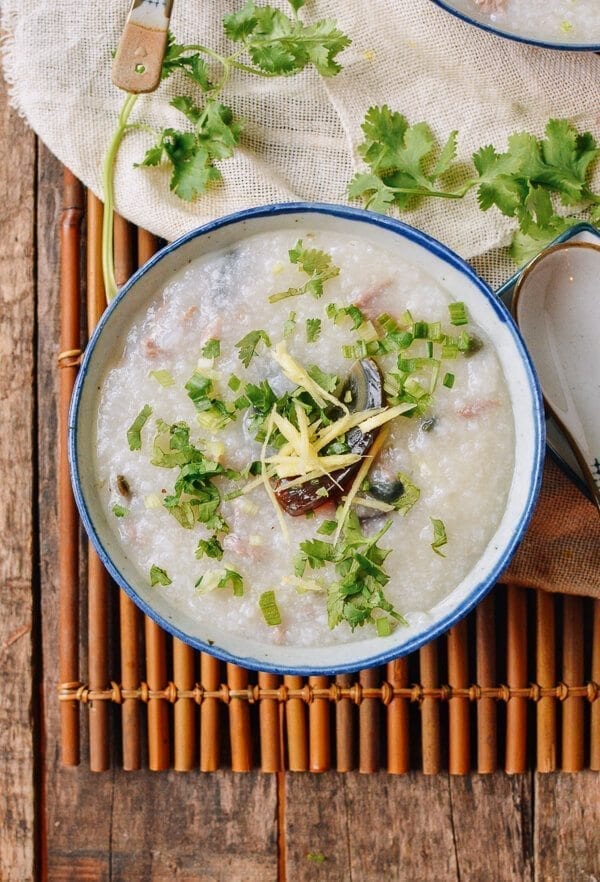
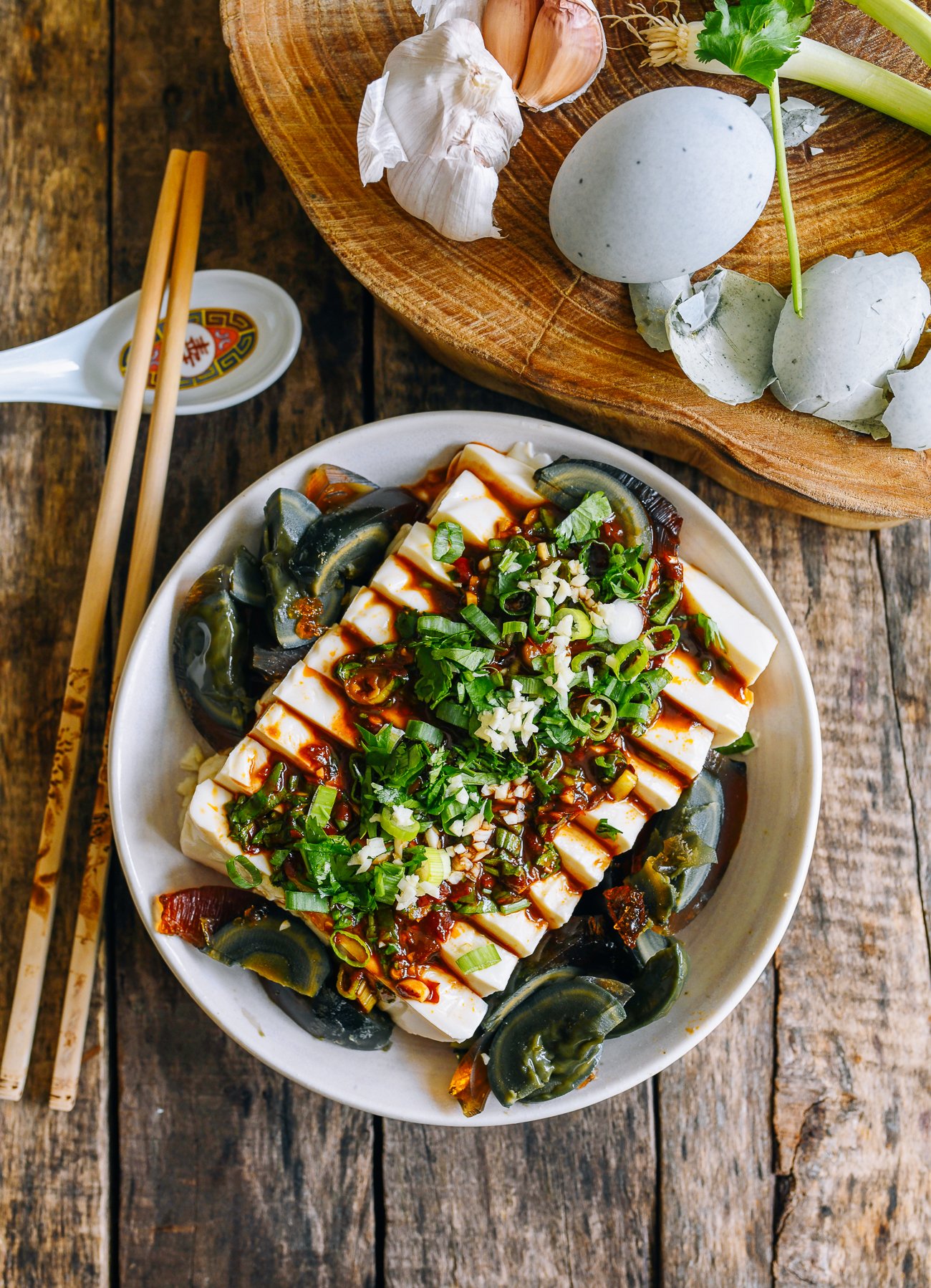
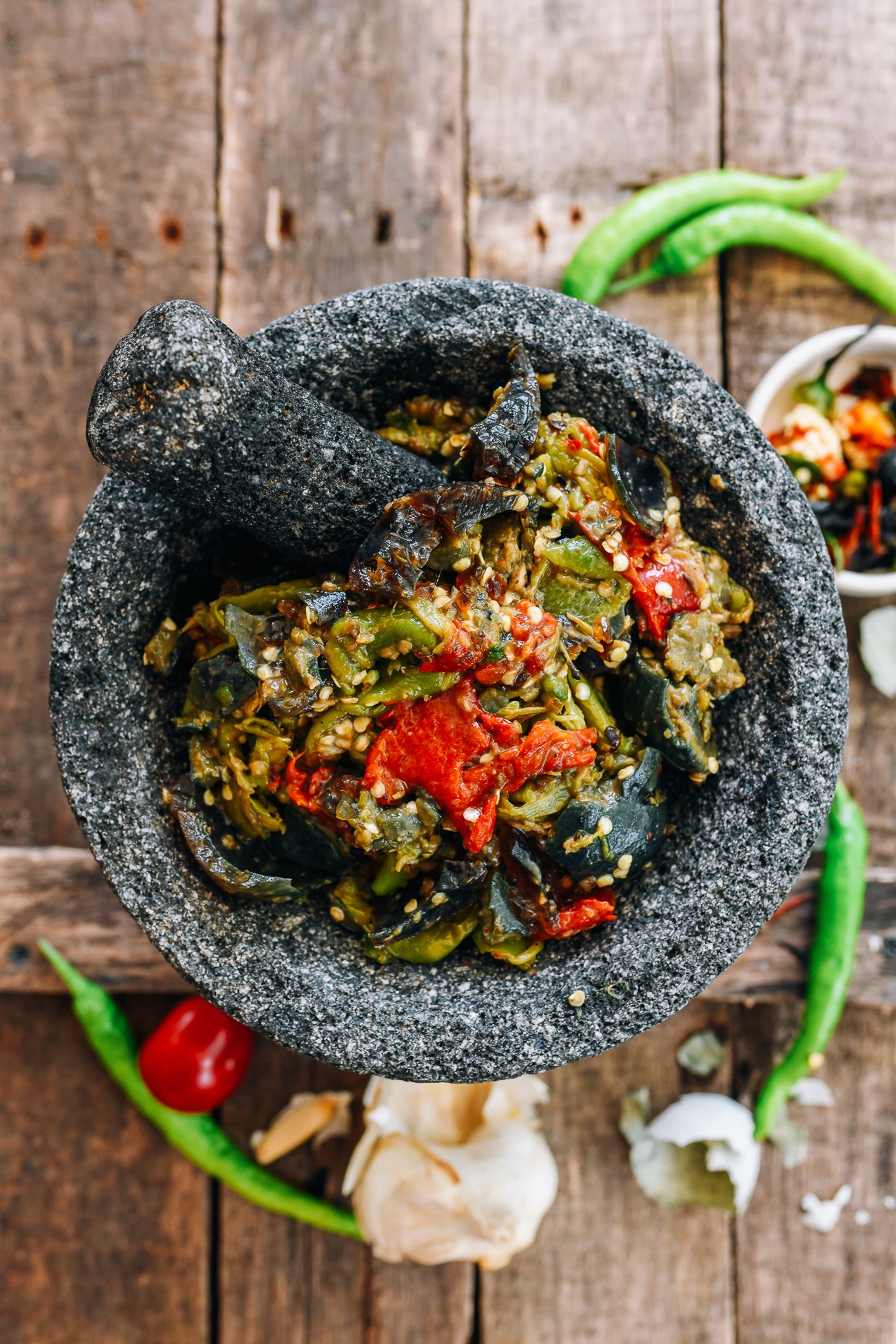

Where to Buy
You can find century eggs in most Chinese or Asian grocery stores, often in the refrigerated section or alongside other preserved foods. They’re typically sold in packs of four to six, cleaned and individually plastic-wrapped. Usually the eggs are in a sealed package, but if not, look for eggs with no cracks or unusual odors. Also check the expiration date!
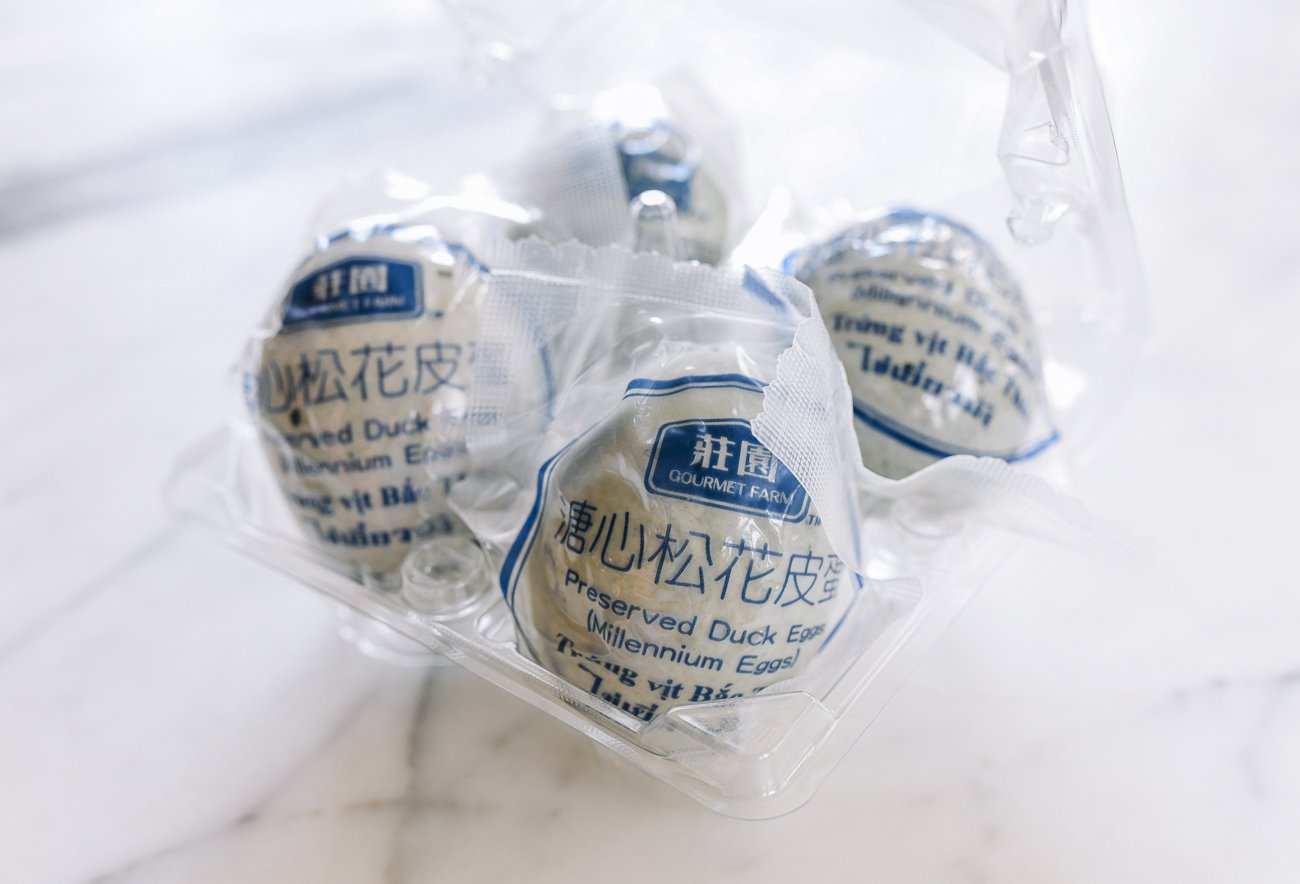
How to Store
Store unopened eggs in a cool, dry place away from direct sunlight. You can also refrigerate them if you like. If you notice any mold, discard them immediately.
They have a fairly long shelf life when properly stored in a cool, dry place—up to several months. Refrigeration can extend their shelf life even further, though the texture may become slightly firmer.

